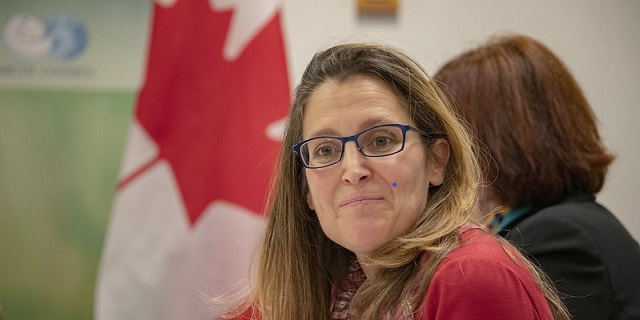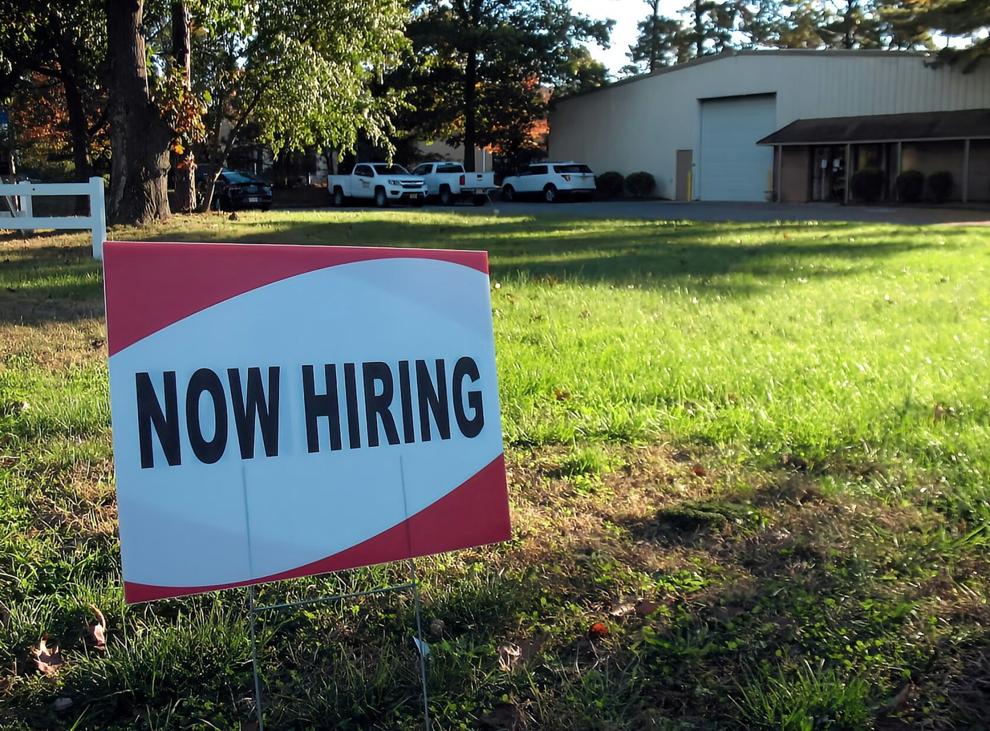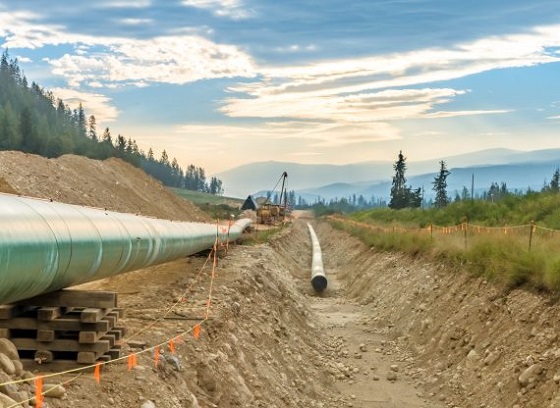Business
Federal government keeps violating self-imposed fiscal rules

From the Fraser Institute
By Jake Fuss and Grady Munro
By continually violating its own fiscal anchor, the Trudeau government has rendered the rule meaningless and abandoned the discipline it’s meant to impose.
Last week, after tabling the Trudeau government’s fall fiscal update, which includes evermore spending and borrowing, Finance Minister Chrystia Freeland called it a “responsible fiscal plan.” Upon closer scrutiny, however, the finance minister has once again abandoned her self-imposed fiscal rules and continues to spend, borrow and tax at unsustainable levels.
Fiscal rules, also known as “fiscal anchors,” help guide policy on government spending, taxes and borrowing. They’re supposed to prevent a deterioration in government finances, with an eye on ensuring debt is sustainable for future generations.
After taking office in 2015, the Trudeau government announced its fiscal anchor—balance the budget by fiscal year 2019-20. When the government quickly realized it would not achieve this goal, it dropped a new fiscal anchor—reduce Canada’s debt-to-GDP ratio, a common measure of a country’s ability to pay back its debt. However, the 2019 fall fiscal update revealed the government had violated its new fiscal anchor before the pandemic, as debt-to-GDP ticked up slightly from 30.8 to 31.0 per cent. In other words, federal debt grew slightly faster than the Canadian economy.
Then the government spent and borrowed hundreds of billions during COVID, driving debt-to-GDP up to 47.2 per cent in 2020-21. Afterwards, as the economy rebounded, the ratio levelled off and stabilized around 42 per cent in 2022-23.
Last week, Minister Freeland indicated the government will violate its own fiscal anchor at least two more times—debt-to-GDP will increase to 42.4 per cent in 2023-24 then climb higher in 2024-25. Again, federal debt is growing faster than the Canadian economy.
By continually violating its own fiscal anchor, the Trudeau government has rendered the rule meaningless and abandoned the discipline it’s meant to impose. There’s little direction for federal finances and almost nothing to ensure the government is disciplined with spending and debt growth. In such a scenario, politics—not responsible fiscal principles—governs decisions over the public purse.
So, what are the consequences to this wholly undisciplined approach to fiscal policy?
All else equal, a rising debt-to-GDP ratio means that debt interest costs will rise relative to the size of the economy. Spending on rising debt interest costs will divert money away from government programs and/or crowd out any fiscal room for tax relief for Canadian families.
And debt interest costs are rising rapidly. In 2020/21, when interest rates were at historic lows, the federal government spent $20.4 billion on debt interest. This year, interest costs will reach a projected $46.5 billion, more than double what they were three years ago. And will hit a projected $60.7 billion by 2028/29—double what the government plans to spend on employment insurance benefits that year.
Finally, according to last week’s fiscal update, debt-to-GDP will begin to decline after 2024/25, but this should be taken with a huge grain of salt since this government has consistently increased spending and debt beyond its original projections. And there’s nothing preventing the government from scrapping these commitments like they have with all their other fiscal anchors. Given the government’s clear preference for spending financed by borrowing, our debt-to-GDP ratio will likely continue to grow.
Unfortunately, there are few signs the Trudeau government will transform into a responsible steward of public finances and take meaningful steps to control debt and debt interest costs. And of course, Canadian taxpayers will pay the price.
Authors:
Business
Residents in economically free states reap the rewards

From the Fraser Institute
A report published by the Fraser Institute reaffirms just how much more economically free some states are compared with others. These are places where citizens are allowed to make more of their economic choices. Their taxes are lighter, and their regulatory burdens are easier. The benefits for workers, consumers and businesses have been clear for a long time.
There’s another group of states to watch: “movers” that have become much freer in recent decades. These are states that may not be the freest, but they have been cutting taxes and red tape enough to make a big difference.
How do they fare?
I recently explored this question using 22 years of data from the same Economic Freedom of North America index. The index uses 10 variables encompassing government spending, taxation and labour regulation to assess the degree of economic freedom in each of the 50 states.
Some states, such as New Hampshire, have long topped the list. It’s been in the top five for three decades. With little room to grow, the Granite State’s level of economic freedom hasn’t budged much lately. Others, such as Alaska, have significantly improved economic freedom over the last two decades. Because it started so low, it remains relatively unfree at 43rd out of 50.
Three states—North Carolina, North Dakota and Idaho—have managed to markedly increase and rank highly on economic freedom.
In 2000, North Carolina was the 19th most economically free state in the union. Though its labour market was relatively unhindered by the state’s government, its top marginal income tax rate was America’s ninth-highest, and it spent more money than most states.
From 2013 to 2022, North Carolina reduced its top marginal income tax rate from 7.75 per cent to 4.99 per cent, reduced government employment and allowed the minimum wage to fall relative to per-capita income. By 2022, it had the second-freest labour market in the country and was ninth in overall economic freedom.
North Dakota took a similar path, reducing its 5.54 per cent top income tax rate to 2.9 per cent, scaling back government employment, and lowering its minimum wage to better reflect local incomes. It went from the 27th most economically free state in the union in 2000 to the 10th freest by 2022.
Idaho saw the most significant improvement. The Gem State has steadily improved spending, taxing and labour market freedom, allowing it to rise from the 28th most economically free state in 2000 to the eighth freest in 2022.
We can contrast these three states with a group that has achieved equal and opposite distinction: California, Delaware, New Jersey and Maryland have managed to decrease economic freedom and end up among the least free overall.
What was the result?
The economies of the three liberating states have enjoyed almost twice as much economic growth. Controlling for inflation, North Carolina, North Dakota and Idaho grew an average of 41 per cent since 2010. The four repressors grew by just 24 per cent.
Among liberators, statewide personal income grew 47 per cent from 2010 to 2022. Among repressors, it grew just 26 per cent.
In fact, when it comes to income growth per person, increases in economic freedom seem to matter even more than a state’s overall, long-term level of freedom. Meanwhile, when it comes to population growth, placing highly over longer periods of time matters more.
The liberators are not unique. There’s now a large body of international evidence documenting the freedom-prosperity connection. At the state level, high and growing levels of economic freedom go hand-in-hand with higher levels of income, entrepreneurship, in-migration and income mobility. In economically free states, incomes tend to grow faster at the top and bottom of the income ladder.
These states suffer less poverty, homelessness and food insecurity and may even have marginally happier, more philanthropic and more tolerant populations.
In short, liberation works. Repression doesn’t.
Business
Some Of The Wackiest Things Featured In Rand Paul’s New Report Alleging $1,639,135,969,608 In Gov’t Waste


From the Daily Caller News Foundation
Republican Kentucky Sen. Rand Paul released the latest edition of his annual “Festivus” report Tuesday detailing over $1 trillion in alleged wasteful spending in the U.S. government throughout 2025.
The newly released report found an estimated $1,639,135,969,608 total in government waste over the past year. Paul, a prominent fiscal hawk who serves as the chairman of the Senate Homeland Security and Governmental Affairs Committee, said in a statement that “no matter how much taxpayer money Washington burns through, politicians can’t help but demand more.”
“Fiscal responsibility may not be the most crowded road, but it’s one I’ve walked year after year — and this holiday season will be no different,” Paul continued. “So, before we get to the Feats of Strength, it’s time for my Airing of (Spending) Grievances.”
Dear Readers:
As a nonprofit, we are dependent on the generosity of our readers.
Please consider making a small donation of any amount here.
Thank you!
The 2025 “Festivus” report highlighted a spate of instances of wasteful spending from the federal government, including the Department of Health and Human Services (HHS) spent $1.5 million on an “innovative multilevel strategy” to reduce drug use in “Latinx” communities through celebrity influencer campaigns, and also dished out $1.9 million on a “hybrid mobile phone family intervention” aiming to reduce childhood obesity among Latino families living in Los Angeles County.
The report also mentions that HHS spent more than $40 million on influencers to promote getting vaccinated against COVID-19 for racial and ethnic minority groups.
The State Department doled out $244,252 to Stand for Peace in Islamabad to produce a television cartoon series that teaches children in Pakistan how to combat climate change and also spent $1.5 million to promote American films, television shows and video games abroad, according to the report.
The Department of Veterans Affairs (VA) spent more than $1,079,360 teaching teenage ferrets to binge drink alcohol this year, according to Paul’s report.
The report found that the National Science Foundation (NSF) shelled out $497,200 on a “Video Game Challenge” for kids. The NSF and other federal agencies also paid $14,643,280 to make monkeys play a video game in the style of the “Price Is Right,” the report states.
Paul’s 2024 “Festivus” report similarly featured several instances of wasteful federal government spending, such as a Las Vegas pickleball complex and a cabaret show on ice.
The Trump administration has been attempting to uproot wasteful government spending and reduce the federal workforce this year. The administration’s cuts have shrunk the federal workforce to the smallest level in more than a decade, according to recent economic data.
Festivus is a humorous holiday observed annually on Dec. 23, dating back to a popular 1997 episode of the sitcom “Seinfeld.” Observance of the holiday notably includes an “airing of grievances,” per the “Seinfeld” episode of its origin.
-

 armed forces1 day ago
armed forces1 day agoOttawa’s Newly Released Defence Plan Crosses a Dangerous Line
-

 espionage1 day ago
espionage1 day agoCarney Floor Crossing Raises Counterintelligence Questions aimed at China, Former Senior Mountie Argues
-

 Health1 day ago
Health1 day agoAll 12 Vaccinated vs. Unvaccinated Studies Found the Same Thing: Unvaccinated Children Are Far Healthier
-

 Energy1 day ago
Energy1 day ago75 per cent of Canadians support the construction of new pipelines to the East Coast and British Columbia
-

 Opinion1 day ago
Opinion1 day agoPope Leo XIV’s Christmas night homily
-

 armed forces1 day ago
armed forces1 day agoRemembering Afghanistan and the sacrifices of our military families
-

 Energy2 days ago
Energy2 days agoThe Top News Stories That Shaped Canadian Energy in 2025 and Will Continue to Shape Canadian Energy in 2026
-

 Energy2 days ago
Energy2 days agoWestern Canada’s supply chain for Santa Claus







